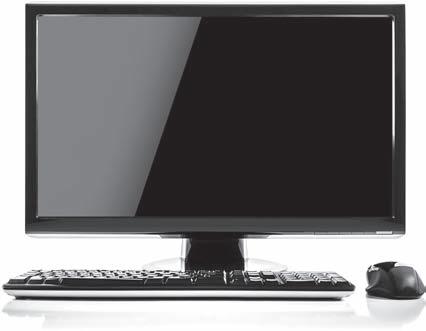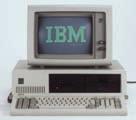https://ebookmass.com/product/survey-of-operatingsystems-5e-5th-edition-ebook-pdf-version/
Principles of Computer Security: CompTIA Security+ and Beyond (Exam SY0-601), 6th Edition Greg White
https://ebookmass.com/product/principles-of-computer-security-comptiasecurity-and-beyond-exam-sy0-601-6th-edition-greg-white/
ebookmass.com
ABOUT THE AUTHORS III
ABOUT THE CONTRIBUTORS III
ACKNOWLEDGMENTS IV
ABOUT THIS BOOK V
NEW TO SURVEY OF OPERATING SYSTEMS, FIFTH EDITION VII
INTRODUCTION XIII
1 Introduction to Operating Systems 1
An Overview of Microcomputer Operating Systems 2
About Microcomputers 2
Functions of Microcomputer Operating Systems 5
Yesterday’s Operating Systems 11
UNIX—The Operating System for All Platforms 12
The Evolution of Desktop Operating Systems 13
Today’s Desktop Operating Systems 26
Today ’s Windows for the Desktop 26
Apple OS X 29
Linux 30
Today’s Mobile Operating Systems 30
Mobile Devices 31
Connectivity 31
Mobile Operating System Features 32
CHAPTER 1 REVIEW 34
2 Computer Security Basics 39
Threats to Computers and Users 40
Malicious Tools and Methods 40
Accidents, Mistakes, and Disasters 52
Keeping Track of New Threats 52
The People Behind the Threats 53
Defense Against Threats 54
Education 54
Security Policies 55
Firewalls 56
Security Software 59
Authentication and Authorization 64
Passwords 66
Security Account Basics 66
Best Practices When Assigning Permissions 69
Best Practices with User Names and Passwords 70
Encryption 72
Data Wiping 73
Physical Security 74
Security for Mobile Computing 74
Troubleshooting Common Security Problems 74
Troubleshooting Log-On Problems 75
Using the Administrator Account in Troubleshooting 76
Troubleshooting a Suspected Malware Attack 76
CHAPTER 2 REVIEW 80
3 Desktop Virtualization 85
Virtualization Overview 86
Virtualization Is Everywhere 86
Your (Great?) Grandparent’s Virtual Machines 87
Today’s Virtual Desktops 87
Virtual Machines on Windows Desktops 90
Windows XP Mode and Windows
Virtual PC on Windows 7 90
Client Hyper-V on Windows 8. x and Windows 10 100
Oracle VirtualBox 102
Virtual Machines on OS X 103
Apple Boot Camp—A Dual-Boot Option 103
Oracle VirtualBox 104
CHAPTER 3 REVIEW 111
4 Windows 7 115
Installing Windows 7 115
The Windows 7 Lifecycle 116
Recommended System Requirements 116
Windows 7 Editions 116
Upgrade Paths 117
Preparing to Install Windows 7 118
The Installation 121
PostInstallation Tasks 125
Windows 7 Features 127
The Windows 7 Desktop 128
File System Support 133
Security 135
Program Compatibility 135
Recovery Tools 136
Customizing and Managing
Windows 7 137
Computer Management 137
Preparing the Desktop for Users 138
Installing and Removing Applications 143
Managing Windows Components 144
Simple File Management 144
Managing Local Security in Windows 7 150
Administering Local User Accounts 150
Local Security for Files and Folders 153
BitLocker Drive Encryption 155
Windows Defender 157
Microsoft Security Essentials 157
Windows Firewall 157
CHAPTER 4 REVIEW 158
5 Windows 8.1 163
Installing Windows 8.1 164
System Requirements 164
Windows 8 and 8.1 Editions 164
Upgrade Paths 165
Preparing to Install Windows 8.1 165
The Installation 173
Postinstallation Tasks 178
Installing Drivers 178
Installing Updates 179
Virtual Machine Guest Additions 182
Remove Unnecessary Software 182
Create a Backup Image 182
Turn on File History 183
Shutting Down Windows 8.1 183
Navigating and Configuring
Windows 8.1 185
A GUI Optimized for Touch Devices 185
Keyboard Shortcuts 187
The Lock Screen 187
The Start Screen 187
The Desktop 191
Managing Apps 195
Securing Windows 8.1 198
Windows Defender 198
Administering Local User Accounts 199
Windows SmartScreen 201
A Windows 8.1 Computer in a Kiosk 202
CHAPTER 5 REVIEW 203
6
Windows 10 207
Installing Windows 10 207
Windows 10 Editions 208
System Requirements 209
Upgrading to Windows 10 209
Preparing to Install Windows 10 214
The Installation 217
Postinstallation Tasks 224
Get Acquainted with the New GUI 224
Install and Troubleshoot Drivers 227
Personalize Windows 10 233
Configure Windows Update 236
Make Windows 10 Run Better in a Virtual Machine 239
Remove Unwanted Software 239
Migrate or Restore Data 239
Back Up Data and the System 240
Working with Windows 10 Features 241
Using the Start Menu 242
Getting Started with Cortana 248
Using Apps in Windows 10 249
Securing Windows 10 254
Privacy Settings 254
Windows Hello 254
Microsoft Passport 255
Windows Defender 255
Windows Firewall 256
CHAPTER 6 REVIEW 257
7 Supporting and Troubleshooting Windows 263
Understanding the Registry 264
The Registry Defined 264
Automatic Registry Changes 264
Registry Files 264
The Temporary Portion of the Registry 267
Viewing and Editing the Registry 267
Backing Up the Registry 268
Windows User and Power Options 272
User Options 272
Power Options 273
Windows 7 Startup Phases 274
Windows Secure Boot and Fast Boot 276
Modifying System Startup 277
Installing and Managing Device Drivers 281
Installing Device Drivers 281
Managing Installed Devices 282
Using Windows Troubleshooting and Recovery Tools 287
For Startup Failures: The Windows
Recovery Environment 287
Let’s Get Down to Work
OK, enough of this introductory stuff. This is the last time in this book that you’ll see so many words without illustrations. From now on it’s downright exciting. Learn a lot and have fun!
Supplements
For teachers using this book in the classroom, a powerful collection of teaching tools written by the authors is available online at www.mhhe.com/ holcombe5:
• An Instructor’s Manual that maps to the organization of the textbook and provides additional instructor tips and activities to use with the book.
• A test bank for each chapter available online in either Word or EZ Test format.
• Engaging PowerPoint slides on the lecture topics, including key points and illustrations from the chapters.
• A bonus chapter entitled “File Management in the Cloud” with an overview of cloud services as well as the basics of using cloud storage for personal data.
Jane Holcombe
Charles Holcombe
Introduction to Operating Systems chapter 1



Understanding operating systems (OSs) is critical to your future success in life. It is. Just believe us. You don’t? You say you drive a car just fine, but you don’t understand its engine, transmission, or other systems? So why can’t you just use your computer? Why do you have to even know it has an OS? If you can successfully operate a car, you actually know more about its internal workings than you realize. You turn on the ignition, shift to the correct gear, press the accelerator, and drive down the street without hitting anything. You stop it (in time, usually). You use your car to go somewhere, thus making the car your transportation tool. Having only superficial knowledge of the workings of your car is adequate if you never intend to repair your car or to explain to a mechanic the symptoms of a problem. And just as you can use a car without in-depth knowledge of how it works, you can use your computer to write a letter, send email, create a report, surf the Internet, participate in social networking, and much more without understanding operating systems. You only have to know how to turn it on, call up the application program you wish to use, perform tasks, and turn it off.
Learning Outcomes
In this chapter, you will learn how to:
LO 1.1 Describe the purpose and functions of operating systems.
LO 1.2 Describe major events in the evolution of operating systems.
LO 1.3 List and compare the common desktop operating systems in use today.
LO 1.4 List the most common mobile OSs, the devices associated with them, and the features found in most of these devices.
But if you ever want to understand how your car actually works, you need to spend time studying it. And if you want to get the most out of the computers you use in your work, school, and private life, you need to understand how the most critical software component, the computer’s operating system, works.
This chapter provides an overview of microcomputer operating systems—specifically, those commonly found on desktop and laptop computers and the personal mobile devices we use today. We’ll begin with a brief look at microcomputers—their components and their general types. Then we’ll explore the functions that operating systems perform, as well as describe the classic categories of operating systems Finally, we introduce you to the OSs in all types of microcomputers including those in home and office computers as well as tablets and smartphones.
LO 1.1 l An Overview of Microcomputer Operating Systems
Note: The OS is an interpretor between the user and the hardware.
An operating system (OS) is a collection of programs that controls all of the interactions among the various system components, freeing application programmers from needing to include such functions in their programs. An application is software that allows a user to perform useful functions, such as writing a report, picking up email, editing graphics, calculating a budget, and much more. Microsoft Word and Adobe Photoshop are applications. Applications send commands to the OS to interact with the hardware. This book explores the common operating systems used in microcomputers, but before we explore, let’s answer a few general questions you may have: What is a microcomputer? What microcomputers are you using today?
A typical PC with components.
About Microcomputers
Our friend Brianna uses a PC at work and an Apple iMac at home, and she always has her smartphone handy. She will soon take night classes in which she will use either a tablet or laptop that she will carry to and from school. She wants to learn more about the computers she uses each day, beginning with the hardware.
Hardware Components
To understand microcomputers, you need to learn a few technical terms. A computer is a device that performs calculations. Early computers had many mechanical components, but a typical modern computer is an electronic device that can perform a huge number of useful tasks for its owner. Any computer, small or large, has a central processing unit (CPU) that performs the calculations, or processing for the computer.
Note: Common slang for an integrated circuit is “chip.”
A microcomputer is a computer small enough and cheap enough for the use of one person. The CPU in a microcomputer is a microprocessor, although many still refer to it simply as a CPU or processor. This miniaturization of computer components became possible through the invention and development of many technologies. One of the most important of those inventions was the integrated circuit (IC), a small electronic component made up of transistors (tiny switches) and other miniaturized parts. These replaced the bulky vacuum tubes in early TVs and in mid-twentieth century mainframe computers. Each computer that Brianna uses consists of many components, some of which allow her to interact with it. In techie talk, we call interaction with a
computer input/output (I/O). When we send something into the computer we call it input. You are inputting through input devices when you type on the keyboard, tap on a touch screen, or talk to a computer through a microphone. Output is processed information of many types: sounds sent through the speakers, visual output to the display screen or printer and data files saved or sent over a network.
In a microcomputer the internal components include at least one microprocessor, random-access memory (RAM) that acts as the main memory for holding active programs and associated data, firmware (software resident in integrated circuits), and various other supporting circuitry, all installed onto a motherboard The typical microcomputer also has some form of storage, such as a hard drive, and it has at least one means each for input and output.
System firmware contains program code that informs the processor of the devices present and how to communicate with them. Firmware is an interface between the hardware and the operating system. The system firmware in PCs for most of the last three decades has been read only memory basic input output system (ROM BIOS), which has been replaced by a new standard for system firmware called Unified Extensible Firmware Interface (UEFI). UEFI supports modern computers, while ROM BIOS had many technical limits because it was designed to work with the original IBM PC. UEFI is faster and includes security features that protect the computer during that vulnerable time while an operating system is just starting up and not entirely in control.
Additionally, most components and peripheral devices that connect to a computer (such as the video and network adapters, USB ports, and digital cameras) have their own firmware, which is often limited to small programs for providing basic communication between the operating system and the component. Supplementing or replacing the firmware—even parts of the central system firmware—are device drivers. A device driver is a special program installed into an operating system. Each device driver contains code for controlling a component; it is an extension of the firmware, usually allowing much more control of a device than the device’s firmware.
Although you may never be aware of the firmware on a mobile device, on an older PC or laptop you may see evidence of the system and other firmware as they perform tests of the hardware. The traditional system firmware test is known as the power on self-test (POST). Carefully watch the screen as you power up the computer, as shown in Figure 1–1. If status and error messages display in plain text on a black background during startup, they are the result of the POST and the tests of additional firmware on the computer’s components. More recent computers may show a message only if there is a serious problem with the computer.
Note: Random-access memory (RAM) is volatile: when you turn off the computer the contents in RAM disappear.
Note: Fortunately, you may never need to be concerned about device drivers because they install automatically in most operating systems.
FIGURE 1–1 An example of a firmware start-up message on an old PC.
In general, consumers encountered their first microcomputers in 1977 with the introduction of Apple’s Apple II, Radio Shack’s TRS-80, and Commodore’s PET. It was the Apple II that best combined the critical elements that defined a microcomputer at the time; these included a keyboard, a monitor, available peripherals, an operating system, desirable and useful applications, and a reasonable price tag.
Today ’s Microcomputers
What microcomputers do you use? The answer will include several, depending on your activities. The miniaturization of computers led to computers being built into all types of machinery, including vehicles, aircraft, and appliances. And that is just the short list. Computers touch our lives 24/7, and each has some form of operating system. For our purposes, we will concentrate on the operating systems in desktops, laptops, and mobile devices. We will limit the mobile device OSs to those in tablets and smartphones. Another type of computer that you use less directly is a server. Servers also use microcomputer technology, but on a larger scale. We describe these types of microcomputers next.
Desktops and Laptops. A desktop computer is a computer designed to spend its useful life in one location—on a desk. A laptop computer has a flat screen and a keyboard, each integrated into a panel with a hinge holding the two together and allowing you to close the laptop and slip it into a case for easy portability. There are many sizes and types of laptop computers. Laptops are often used as portable replacements for desktop PCs. The common operating systems for these computers are Microsoft Windows and Linux for PCs and laptops, and Apple’s OS X, which runs on Apple’ s Mac desktop and laptop computers. The same version of the Windows OS will run on a desktop, a compatible laptop computer, or a compatible tablet.
In the decades since the introduction of the IBM PC in 1981, the majority of desktop and laptop computers used in private and public organizations have used Microsoft operating systems, with computers running versions of Apple’s operating systems a distant second. In recent years however, Apple desktop and laptop computers have made great gains in market share, but Apple’s real advances have been in their mobile products.
Mobile Devices. Microcomputers today include a long list of devices that don’t have computer in their name, including mobile devices. A mobile device has all or most of its electronic circuitry, such as the microprocessor, controllers, and memory, on a single microchip. This is known as system-on-a-chip (SoC). Mobile devices use wireless technologies and include a wide variety of products ranging from single-purpose computers to multifunction mobile devices. Some mobile devices run proprietary OSs, while others run scaleddown versions of desktop OSs. A mobile device commonly stores its OS in firmware, as an embedded OS.
Note: In this book we use the term personal computer (PC) for a desktop computer running Windows or Linux and Mac for the Apple iMac desktop computers as well as the MacBook laptop computers. Both types of Apple computers run OS X.
The most popular mobile devices are smartphones. Worldwide use of smartphones continues to grow significantly. Market research firm GfK reported 309.7 million smartphones sold in the first quarter of 2015, an increase of 7 percent over the first quarter of 2014. A smartphone works as a cell phone, but also lets you connect to the Internet, view your email, and install and run a variety of apps for entertainment, education, and work. Modern smartphones have high-quality touch screens. Examples of smartphones are Apple’s iPhones and various models by Motorola, Nokia, HTC, Samsung, LG, and others. Examples of operating systems designed specifically for use on smartphones
A PC laptop.
A MacBook laptop.
bottom right of Figure 1– 3. By contrast, in a CLI, you would type a command such as “delete report.txt.”
Job Management
Job management, also known as process scheduler, is an operating system function that controls the order and time in which programs run. Two examples of programs that may take advantage of this function are a scheduling program that schedules other programs to run on a certain day and time, and a print program that manages and prioritizes multiple print jobs.
Task Management
Task management is an operating system function found in multitasking operating systems. Multitasking implies that a computer is running two or more programs (tasks) at the same time. In reality, a computer cannot simultaneously run more tasks than the number of processors that exist within the computer. Until recently, most microcomputers had only a single processor, so they accomplish multitasking through a scheme that makes order out of chaos by determining which program responds to the keystrokes and mouse movements. New processors can have multiple CPUs within a single chip, so they have true multitasking coexisting with task switching
Task management controls the focus (where the system’s attention is at any given moment). It allows the user to switch between tasks by giving the focus to the application the user brings to the foreground. In graphical operating systems, the foreground application runs in the current window, the window that is on top of other windows on the screen. This window receives input from the keyboard, mouse, and/or touch screen when
View Active Tasks in Windows or OS X You can see what tasks are running on your Windows or OS X computer. Try this:
1. On a Windows computer with a keyboard, press Ctrl-Shift-Esc to open Task Manager, a utility that lets you view tasks as running applications and their processes. Select the Processes tab and notice the large number of active processes.
2. On an OS X computer press Command+Spacebar to open the Spotlight search box, and then type “activity” and select Activity Monitor from the results list. Notice the list of processes in the column labeled Process Name.
Job Management
FIGURE 1–3 The OS X GUI.
the user types. While active in memory, a program runs as one or more small components called processes The OS’s task management function manages these processes.
File Management
File management, also referred to as data management, is an operating system function that allows the operating system to read, write, and modify data, while managing the logical storage of the data. Each operating system has at least one scheme of logical organization, called a file system. A file system is the logical structure used on a storage device (hard disk, optical disc, thumb drive, etc.) for managing and storing files. The file system also includes the program code that performs these tasks. An operating system uses a technique called formatting to write the logical structure to a storage device. The operating system maps the logical organization of the file system to physical locations on the storage device, most often a conventional hard disk drive or solid-state drive (SSD), so that it can store and retrieve the data. The logical structure of a file system stores metadata, which summarizes data to facilitate searches.
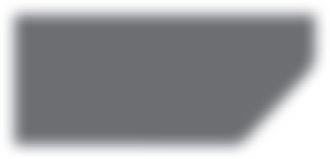
Note: As a rule, the term folder is used in a GUI, while the term directory is used in a non-GUI operating system.
Solid-state drives (SSDs) use integrated circuits, which the computer can write to and read from much faster than conventional hard disk drives and optical drives. We also call such storage solid-state storage. SSDs come in many forms, such as a tiny card installed inside the case of your tablet or smartphone, or a flat device, measuring about ¾ inch by 2 inches (or smaller) that you plug into a computer’s USB connector. This type of SSD is called a thumb drive, jump drive, or flash drive.
Normally, a single storage device will have only a single file system, residing in an area defined as a partition, but some operating systems allow a storage device to have more than one partition. A partition may be an entire drive volume or just a portion of a drive, and an operating system automatically assigns some identifier, such as C for the first hard drive recognized by Windows. Windows follows the drive letter with a colon, so that a complete drive name is C:. We call this a logical drive.
Within the logical structure of a file system, data is organized into entities called files that are saved to storage devices. File management also allows users to organize their files, using other special files that act as containers. One of these special files, called a folder or directory, can contain lists of files as well as other folders, along with the physical location of the files and folders.
Device Management
Memory Management
Device Management
The device management function controls hardware devices by using special software called device drivers that are installed in the operating system. Device drivers are unique to the device, and the manufacturer of the device creates them to work with a specific operating system. For instance, a printer or video adapter may come with drivers for Windows, OS X, and Linux. The device driver contains the commands understood by the device and uses these commands to control the device in response to requests it receives from the operating system. An operating system needs a component-specific device driver for each unique hardware component with which it interacts. OSs today are plug and play (PNP)—they are intelligent enough to detect a device connected by an external port and automatically install the needed device driver.
Memory Management
Memory management is an operating system function that manages the placement of programs and data in memory, while keeping track of where it put them.
Virtual Memory. Modern operating systems use a scheme for making optimal use of memory, even allowing more code and data to be in memory than what the actual physical system memory can hold. Using a memory management OS component called the virtual memory manager, operating systems move code and data, as necessary, to a portion of the disk defined as virtual memory , meaning that this disk space is used as if it were memory, not just disk storage space. The OS performs this transfer for code and data that are part of any program that currently does not have the user’s attention because this information does not have to be kept in RAM for immediate use, so other programs that do need to use the memory can do so.
Operating System Memory Limits. We call an operating system that can take advantage of the addressing and processing features of a processor an x-bit OS, referring to the number of bits the OS (using the processor) can manipulate at once. The PC operating systems of the 1980s and 1990s, PC DOS and MS-DOS were 16-bit OSs, as was Windows 3.0. Windows 95, Windows 98, and Windows Millennium edition were really hybrids, with mostly 32-bit pieces but some 16-bit pieces for downward compatibility. Windows XP had a 64-bit version, but it was not widely used, and you are unlikely to encounter it. The Windows versions, OS X, and Linux OSs we discuss in this book are available in both 32-bit and 64-bit versions.
All things being equal, the 64-bit version of an operating system will be faster than its 32-bit counterpart, but the biggest difference between the 32-bit and 64-bit versions of Windows is in the number of unique locations (the address space) a CPU can assign to both system RAM and other RAM and ROM in your computer. A 64-bit CPU can have a theoretical address space of 264, or 9.2 quintillion (nine followed by 18 digits). Windows does not use the maximum theoretical address space of a CPU, as shown in Table 1–1.
A 64-bit operating system requires 64-bit drivers, and some 32-bit applications may not run, although Microsoft supports older applications in each upgrade of Windows. If you purchase a new computer today with either Windows or the Mac OS preinstalled, it is most likely to be a 64-bit OS. Figure 1–4 shows the System type information for 64-bit Windows 10.
Are You Running 32-bit or 64-bit Windows?
If you have a Windows computer handy, see if it is running a 32-bit or 64-bit version. Try this:
1. In the Windows 7 or Windows 10 Start menu Search box (or in the Windows 8.x Start screen) type “system.”
2. In the search results list select “System.” Do not select “System Information.”
3. This opens Control Panel to the System page.
4. The System Type field will say “32-bit Operating System” or “64-bit Operating System.”
TABLE 1–1 Windows Memory Limits
Note: The timeline running along the bottom of the next several pages shows highlights of computing history. Some are described in this chapter. Many are not.
Security
FIGURE 1–4 Find the operating system type in the System page of Control Panel.
Security
The built-in security features of an operating system provide passwordprotected authentication of the user before allowing access to the local computer and may restrict what someone can do on a computer. This
At the Fall Joint Computer Conference in San Francisco, Douglas Engelbart of Stanford Research Institute demonstrates the use of a mouse to move a “bug” around a screen.
Xerox opens Palo Alto Research Center (PARC).
IBM introduces the floppy disk. Intel creates the 4004 processor, leading the way to the birth of the microcomputer.
A small group at Bell Labs works on what eventually becomes the UNIX operating system.
ARPANET is created, the first step in the building of the Internet.
PARC creates the Altos, the first “personal computer” with a GUI, laser printer, and a connection to the first Ethernet network.
The first portable telephone handset is invented at Motorola by Dr. Martin Cooper.
Reprinted with permission of Alcatel-Lucent USA Inc.
protects the computer and the data it contains from unauthorized access. For example, Rachel is the accounting clerk in a small company. She has confidential information on her computer, and she doesn’t want just anyone to be able to walk up to her computer and access the information stored there. Rachel can set up her computer so that anyone getting into it must log on with a user name and password from a user account. A user account includes, at minimum, a name and an associated password stored inside the PC. Security is a large topic—one that would take many books and weeks of your time to really master—but to go much farther in this book without addressing computer security would be foolish, so Chapter 2 is devoted to computer security basics. There you will learn about threats to computers, what security is built in to the operating systems discussed in this book, and the steps you can take to protect yourself from threats.
LO 1.2 l Yesterday’s Operating Systems
Sometimes people think that they can simply take the newest and best computer or other gadget and make it work without understanding anything about how it came to be. Well, they probably can. But they probably can’t fix it, modify it, or use it effectively without understanding how and why it came to be in the form it’s in now. One really can’t understand current PC technology without having a grasp of older PC technology. In other words, studying history is important to understand how we arrived at today. We’ll begin with UNIX, arguably the oldest OS still in use today, with beginnings that predate microcomputers. Then we’ll explore the history of computers leading to today’s PCs and Mac desktop computers and the operating systems that evolved for each of these hardware platforms.
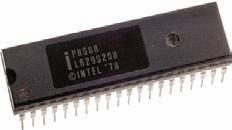
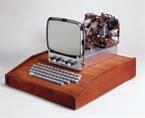
Note: The MITS Altair 8800 was an important predecessor to the Apple II, TRS-80, and PET computers. Although featured in a cover article of the January 1975 issue of Popular Mechanics, it was not for everyday use. Whether you bought the $395 kit or the fully assembled $495 version, the input method was switches that you flipped to program it, and the result of these efforts (the output) was a pattern of blinking lights. As a portent of the future, the Altair 8800 gave Bill Gates and Paul Allen their very first sale of a ROM-based interpreter for the BASIC programming language.
Bill Gates and Paul Allen write the BASIC programming language for the MITS Altair.
Apple II is introduced at the West Coast Computer Faire.
Commodore PET is introduced.
Bill Gates (bottom left) and Paul Allen (bottom right) found Microsoft. Bell Labs releases UNIX version 6, distributed via government and commercial licenses and inexpensive academic licenses.
John Torode and Gary Kildall introduce the microcomputer disk operating system CP/M. Intel releases the 8088 processor.
Steve Jobs and Stephen Wozniak found Apple Computer.
Apple I computer is released.
Popular Electronics introduces the MITS Altair 8800 in a cover story.
the world’s Internet servers. Most versions of UNIX also offer several different user interfaces. Some use character mode, like the traditional shells, such as the Bourne shell and the C shell. Others use a graphical interface such as GNOME or KDE. As mentioned earlier, Apple’s Mac OS X operating system is based on a version of UNIX, and it has a graphical user interface. Even fierce UNIX advocates do not see UNIX taking over the desktop any time soon. However, it is very secure and stable. Versions of UNIX run on many of the world’s Internet servers.
The Evolution of Desktop Operating Systems
The complex and powerful operating system like what you see on your desktop, laptop, or mobile devices didn’t just magically pop into someone’s head. An operating system as a separate entity didn’t exist in the early years of digital computing (defined roughly as from World War II into the 1950s). Each computer was dedicated to a single purpose, such as performing trajectory calculations for weapons or mathematical analysis for a science lab, in addition to the system I/O functions. Loading a new program into a computer was a time-consuming process, and the software had to include system functions as well as the main purpose of the computer.
Small Steps
Operating systems evolved through many small steps over several decades, some in the form of technical advances and others in evolutionary changes in how people used computers, especially as they saw the need to use computers as multipurpose devices. The “user,” at first a government agency, research institute, or large business, would define the computer’s purpose at any given time by the program chosen to run. In the 1950s, some early “operating systems” managed data storage on tape for mainframe computers, but it was much more common for application programmers to write system I/O
TCP/IP becomes the network protocol standard for the Internet.
Apple introduces the Lisa, the first commercial computer with a purely graphical operating system and a mouse.
Mitch Kapor announces Lotus 1-2-3 spreadsheet application for the IBM-PC.
Apple Computer releases the Macintosh with the Mac OS 1.
The 3½-inch floppy drives are introduced.
Satellite Software International (SSI) introduces WordPerfect.
IBM introduces the PC-AT with PC-DOS 3.0.
Microsoft introduces the Microsoft mouse for the IBM PC and compatibles.
Microsoft and IBM introduce PC DOS 2.0 to support the 20 MB hard drive of the IBM PC-XT.
Lotus 1-2-3 sells more than 200,000 copies the first year.
Bell Labs releases UNIX System V, release 2 through commercial licenses.
Motorola introduces the DynaTAC 800X mobile phone (the size and approximate weight of a brick).
Apple Computer releases the “Fat Mac” with 512K of memory.
routines (the stuff of today’s OSs) right into their programs. By the mid-1960s, as disk systems became more common on large computers, we needed operating systems to manage these disks and to perform other common systemlevel routines.
The computer enthusiasts who bought the earliest microcomputers of the 1970s, such as the MITS Altair 8800, were infatuated with the technology. What we now consider slow CPU speeds, very limited memory, clumsy I/O devices, and lack of software was exciting and new technology at the time. They would network with like-minded people, have informal meetings and discussions, and then gather in self-help groups and form clubs such as the Home Brew Computer Club in California’s Silicon Valley. They shared their techniques for creating hardware and programming language software for these computers. Almost every one of these early microcomputers exceeded the expectations of their makers and users, but before long, and for a variety of reasons, most of the early entrepreneurial companies and their products disappeared.
Software Versions
A software version is a unique level of an operating system. When a software publisher creates an entirely new OS, they give it a version number, usually 1.0. Software publishers constantly receive feedback from customers about problems and the need for additional features in each OS. In response, a publisher often introduces a modified version of the original product, in which case the number to the right of the decimal point will probably change (say, from version 1.0 to version 1.1—people often abbreviate version as simply “v”). An entirely new version number (2.0, 3.0, . . .) generally reflects an important change to an OS with major changes to the core components of the operating system as well as a distinctive and unifying look to the GUI.
Bell Labs releases UNIX version 8 to universities. Intel releases the 80386 processor (also called the 386). Hewlett-Packard introduces the LaserJet laser printer.
Microsoft and IBM announce OS/2, a character-mode OS written for the Intel 80286.
IBM introduces its Video Graphics Array (VGA) monitor.
IBM unveils the new PS/2 line of computers, featuring a 20-MHz 80386 processor.
Microsoft ships Windows/286 1.03.
Bell Labs releases UNIX version 9 to universities.
IBM introduces the PC Convertible computer, the first Intel-based computer with a 3½-inch floppy disk drive.
Microsoft ships the first version of Microsoft Windows.
on the IBM PC. Both the Lotus 1-2-3 program and the spreadsheet were in memory while the user worked. It was very fast compared to VisiCalc, which was written to run under the CP/M OS and designed to use much less memory. Lotus 1-2-3 had additional features, including database functions and a program that could create and print graphs from the spreadsheet data. Lotus 1-2-3 was the real killer app, the software that made the IBM PC and PC DOS a must-have combination for people who worked all day crunching numbers and doing what-if calculations.
Apple OS
In 1976, Steve Jobs and Stephen Wozniak—two friends working out of a garage—founded Apple Computer, based on their first computer, the Apple I. Their real notoriety began in 1977 when they introduced the Apple II at the West Coast Computer Faire in San Francisco. This created interest in the brand, and the addition of disk drives in 1978 made it a sought-after product for the technically adventurous consumer. But the OS for the Apple computers at this point did not have a GUI interface—that showed up on the short-lived Apple Lisa computer.
In 1982 Apple introduced the Lisa, the first commercially available computer with a purely graphical operating system—and a mouse. However, this computer lacked something very important for consumers—applications. It was unsuccessful, and Apple’s own Macintosh computer, released in 1984, overshadowed the Lisa and marked the beginning of consumer excitement and the near-cult following of the Apple computer products. The Macintosh came with Mac OS System 1, a GUI operating system that used a mouse. Apple improved the Mac OS over the years to include many easy-to-use features.
The final release of the classic Mac OS family was Mac OS 9, introduced in 1999. With its roots in the original 1984 OS, Apple revised and improved the operating system to support multiple users, but it was weak in memory management and full multitasking. In 2001 it was replaced by a completely new
Note: Through the 1980s, PCs with DOS and a variety of DOS applications made great inroads into organizations of all sizes. In the decade after its introduction, thousands of applications were written for DOS, but Lotus 1-2-3, dBase (database management), and WordPerfect (word processing) were the de facto business standards at the end of that decade. All contributed to the mass adoption of PCs at work, at school, and at home.
Mac OS 8 ships.
Digital Video/Versatile Disc (DVD) technology is introduced.
Apple Computer releases the iMac.
Microsoft releases Windows 98.
Sergey Brin and Larry Page found Google. Intel releases Pentium II chip. 1998
Microsoft releases Windows NT Workstation 4.0.
Apple Computer buys NeXT.
U.S. Robotics releases the PalmPilot personal digital assistant running the Palm OS.
IBM releases OS/2 Warp Server, an OS for network servers.
IBM releases OS/2 Warp 4, which can simultaneously connect to almost any network server.











